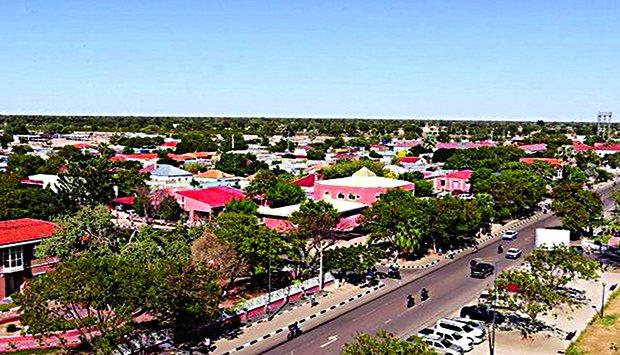Africa-Press – Angola. The President of the Republic today leaves the country’s capital for the province of Cunene, where he will remain until Tuesday. Among the activities to be carried out by João Lourenço, the inauguration, tomorrow, of the water transfer system from the Cunene River, in the village of Cafu, municipality of Ombadja, to supply the localities of Ombala-yo-Mungu ( municipality of Ombadja), Namacunde and Ndombondola, heavily affected by the effects of the drought. This is the first objective response to the problem of drought in this province since the independence of Angola.
Even before construction, the problem of drought in Cunene was fought with water holes, many of which were negative. The Secretary of the President of the Republic for Institutional Communication and Press Affairs, Luís Fernando, said yesterday, when he announced the visit of the Head of State to Cunene, that it is one of the largest and most relevant works of his governance.
He added that it is one of the most strategic structuring projects ever built in the country to end the lack of water in Cunene province. “It will establish the before and after of men’s relationship with nature in the heroic province of Cunene”.
Luís Fernando stressed that on Tuesday the President of the Republic’s agenda in Cunene reserves a mass political act, where he will address the local population.
This is the third time that the President of the Republic travels to Cunene for work. The first was in 2019, at a time when the province was being heavily affected by the effects of severe drought, in the southern region of the country. It was on this visit that he defended, in the city of Ondjiva, a definitive solution to the problem of drought.
“The Government has taken some emergency measures to deal with the drought situation, but we need to find definitive solutions, which cannot be solved, of course, in a single day”, he highlighted at the time.
During this trip, the President of the Republic visited the village of Oshiwanda, in Ombadja, 100 kilometers from Ondjiva, where he noted the precarious conditions of artisanal water wells, 20 to 30 meters deep, used, at the time, by local populations to the withdrawal of water for consumption and watering of cattle.
Before this point, João Lourenço made a short stop in Ombala-yo-Mungu, also in Ombadja, having, on this occasion, offered some goods to the local population to alleviate the effects of the drought.
The drought in the southern region of the country, namely in Cunene, Namibe, Huíla and Cuando Cubango, affected 280,867 families in 2019, corresponding to 1,340,781 people, causing the death of 10,982 heads, according to the report. on the implementation of the Emergency Drought Combat Program in southern Angola.
The last working visit of the President of the Republic to Cunene took place in July last year. On this visit, João Lourenço considered that “bringing food to populations affected by the effects of drought is insufficient and did not constitute a solution”.
The solution to the problem, he said, was to guarantee the existence of water in the area all year round, in order to allow the populations to produce their food. “These are sustainable solutions. And these solutions were found after my visit two years ago,” he said.
On the last day of work, the President visited the works on the Water Transfer System from the Cunene River, in the Cafu area, to supply the towns of Ombala-yo-Mungu, Namacunde and Ndombondola, whose opening could take place tomorrow.
The province of Cunene has registered, since yesterday, a hot climate. It is already notorious, in the city of Ondjiva, the movement of many people who express interest in receiving the President of the Republic.
For More News And Analysis About Angola Follow Africa-Press






